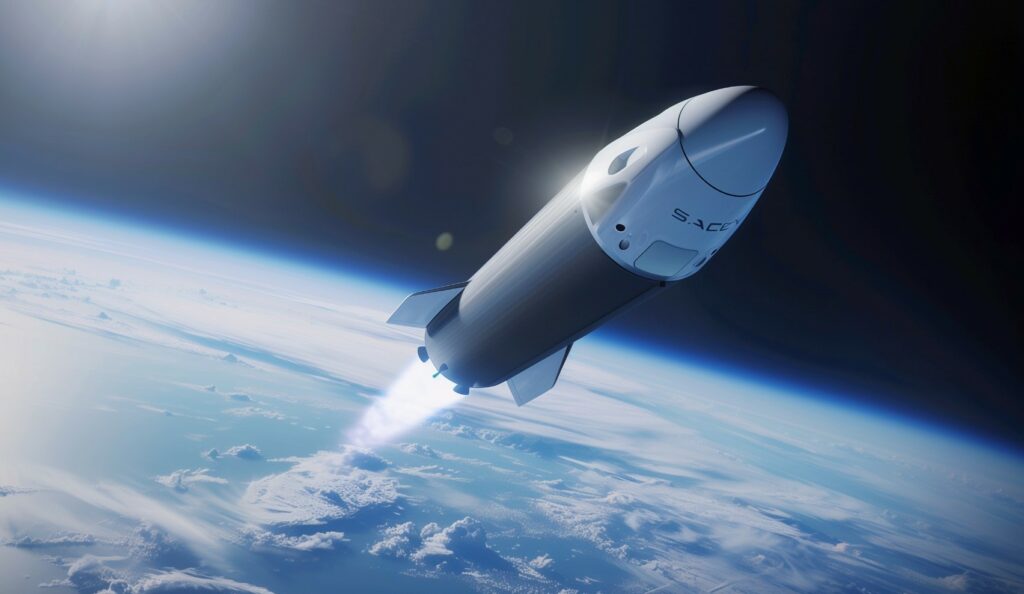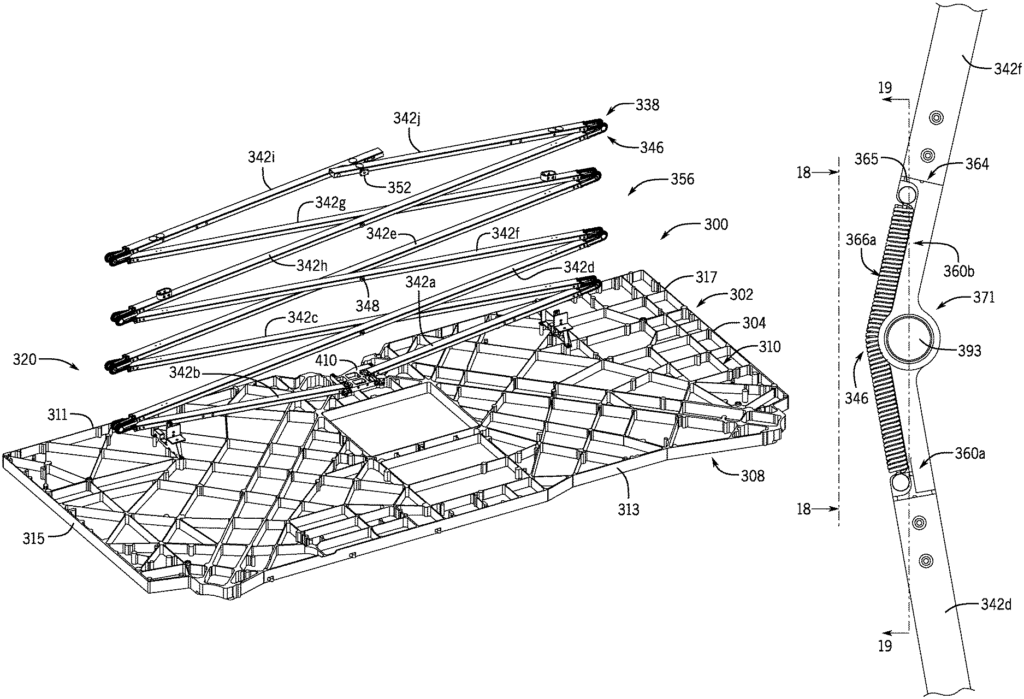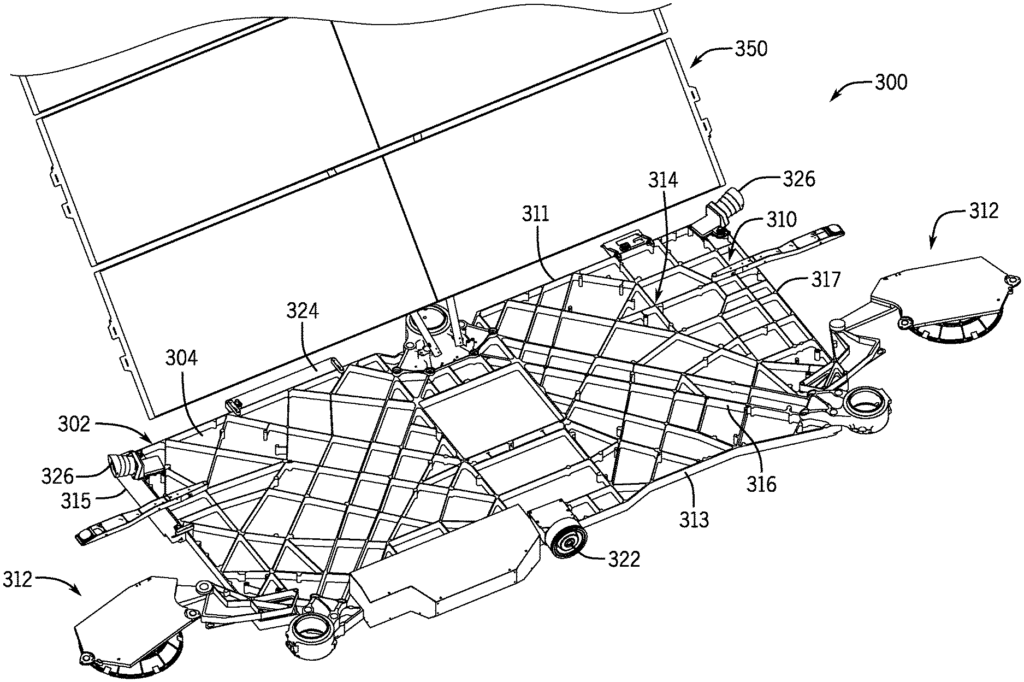SpaceX’s Starship is making headlines with its recent successful high-altitude test flight, bringing humanity closer to Mars colonization. Starship is a fully reusable spacecraft designed for missions to the Moon, Mars, and beyond, equipped with advanced technologies that make space travel more affordable and accessible.
Key patents underpinning Starship’s design include systems for solar array management (US11958638B1), modular chassis configurations (US20240025569A1, US11834205B1), and methods for stacking and releasing spacecraft (US11878820B1, US11787572B1). These innovations ensure efficient power use, robust structure, and effective deployment for long missions.
Starship features the high-efficiency Raptor engine, advanced heat shield technology, and a payload capacity of over 100 metric tons to low Earth orbit. These capabilities are set to transform space exploration, making human missions to Mars a real possibility. Let’s explore the technology behind SpaceX’s Starship and how these patented innovations are shaping the future of space travel.

Image: Source
Working Principle of SpaceX Starship?
Launch and Boost:
- Super Heavy Booster: Provides the initial thrust needed to leave Earth’s atmosphere.
- Raptor Engines: Utilize liquid methane and liquid oxygen for high efficiency and performance.
Stage Separation:
- Separation Mechanism: Once the booster reaches a certain altitude, it separates from the Starship spacecraft.
- Booster Recovery: The Super Heavy booster returns to Earth for reuse.
Orbital Insertion:
- Starship Propulsion: Starship’s own Raptor engines propel it into the desired orbit or trajectory towards its destination.
Interplanetary Travel:
- Solar Arrays: Deploy for power generation, utilizing patented solar array biasing and tensioning systems (US11958638B1).
- Life Support and Systems: Maintain habitable conditions for crew and support mission operations.
Landing:
- Heat Shield: Protects the spacecraft during atmospheric re-entry.
- Landing Legs: Deploy for a controlled and safe landing on the target surface, whether it be Earth, the Moon, or Mars.
Refueling and Reuse:
- In-Orbit Refueling: Capability to refuel in space for extended missions.
Full Reusability: Both the Starship and Super Heavy booster are designed for multiple uses, significantly reducing costs.
Innovation behind the SpaceX Starship
We’ve analyzed key patents related to SpaceX Starship. Read the summary below and discover the ingenious innovations behind this breakthrough technology!
This patent US11958638B1 describes an innovative system for deploying solar arrays on spacecraft, aimed at improving efficiency, reliability, and scalability. It introduces a solar array blanket that moves from a compact stowed configuration to an extended deployed state, supported by an extendable frame with biasing members for smooth deployment.
This system addresses issues of limited stowed volume, mass efficiency, and deployment reliability, allowing spacecraft to carry more power or reduce overall mass and cost. The design ensures that solar arrays can be compactly stored during launch and efficiently deployed in space, enhancing the spacecraft’s capability and reducing mission costs.
This patent US11834205B1 describes a spacecraft chassis designed to improve heat management and optimize stacking for launch. The chassis body, defined by two opposing sides and a perimeter, allows heat-generating components to be directly attached. It includes features that dissipate heat into outer space, ensuring the spacecraft remains cool.
Additionally, the design supports efficient stacking of multiple spacecraft within a launch vehicle, reducing the bulk and weight of dispenser systems. This integration addresses overheating issues and increases payload capacity, making space missions more cost-effective and efficient.
This patent US11878820B1 describes a simplified method and system for deploying multiple spacecraft from a rocket. Spacecraft are arranged in a stack and launched to orbital velocity, where the rocket imposes a flat spin and releases the entire stack. A compressive load applied along the stack during launch is released in orbit to allow the spacecraft to separate.

This method addresses the challenges of bulky and complex dispenser systems, reducing weight and bulk, and increasing payload capacity. The result is a more efficient and cost-effective approach to launching multiple spacecraft, such as satellites, simultaneously.
This patent US20220135258A1 describes a system for transitioning a spacecraft from a power-saving state to an active state after launch, using onboard sensors and a monitoring device to detect deployment conditions. This eliminates the need for traditional umbilical connections between the spacecraft and the launch vehicle, which adds complexity, cost, and risk of interference. By keeping the spacecraft in a low-power state until it is ready to deploy, the system conserves battery life and ensures efficient power management.
This approach simplifies the launch process, reduces costs, and enhances the efficiency and reliability of space missions.
In conclusion, SpaceX’s Starship is a groundbreaking leap in space travel, distinct from competitors like Blue Origin’s New Glenn and NASA’s Space Launch System (SLS). Starship’s fully reusable design and advanced propulsion technology make it more cost-effective and accessible than traditional rockets. Capable of carrying large payloads and human passengers to the Moon, Mars, and beyond, Starship promises to transform space exploration and colonization. Its innovative approach could significantly advance our presence in space, opening new opportunities for scientific research, commercial ventures, and the potential for extraterrestrial habitats.
Also read our analysis on Inflatable Space Habitat: Innovations in Space
Want to track SpaceX patents in aerospace or any other technology? Send us a request through this form:





